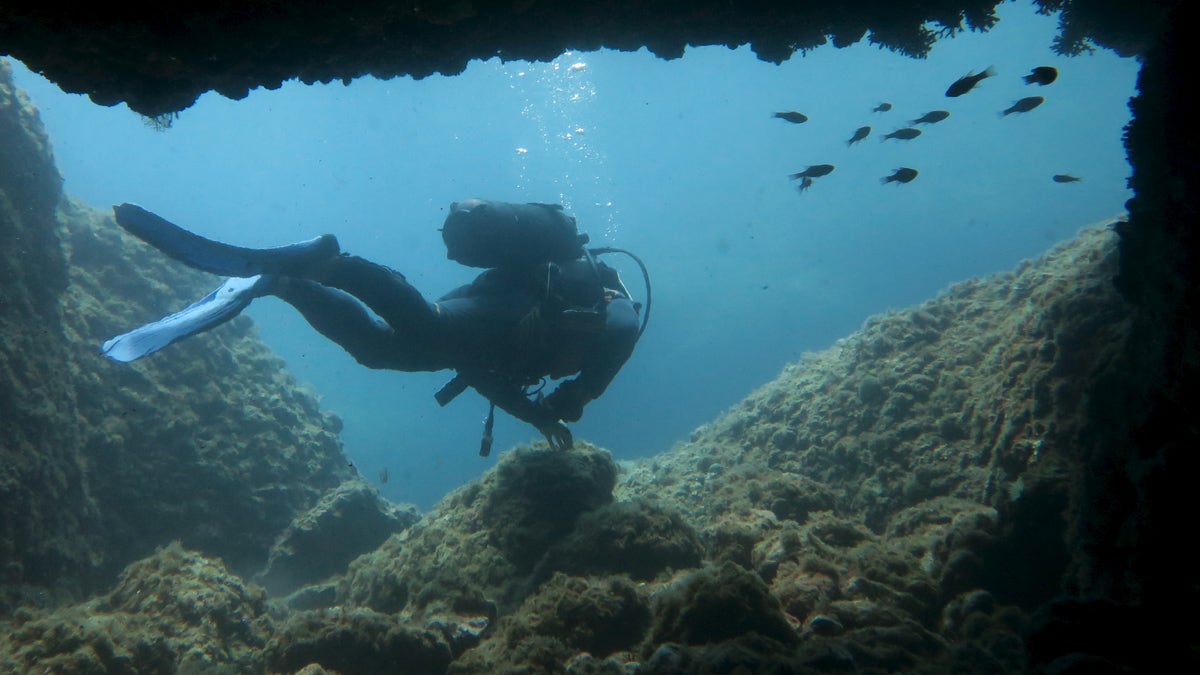
File photo: A scuba diver makes his way out from from an underwater passageway at Isola Bella in Taormina, Italy, at the start of summer holiday season on the Mediterranean island of Sicily July 5, 2015. (REUTERS/John Schults)
One day soon, you may no longer be able to use "I'm going through a tunnel" as an excuse for why you've just hung up the phone.
The Defense Advanced Research Projects Agency (DARPA) and its AMEBA (A Mechanically Based Antenna) team are working on methods to ensure that the answer to "Can you hear me now?" is always "Yes."
AMEBA is in the process of developing portable ULF, or ultra-low-frequency (1Hz to 3kHz), and VLF, or very low frequency (3kHz to 30kHz), transmitters capable of penetrating a whole host of materials that we may have previously thought completely incompatible with such signals. Think underwater and through stone.
According to a news release from DARPA, Troy Olsson of DARPA's Microsystems Technology Office is working on some aspects of electromagnetic physics "that could expand wireless communication and data transfer into undersea, underground, and other settings where such capabilities essentially have been absent." That means connectivity at a previously unthinkable scale.
More From Digital Trends
"If we are successful, scuba divers would be able to use a ULF channel for low bit-rate communications, like text messages, to communicate with each other or with nearby submarines, ships, relay buoys, UAVs, and ground-based assets," said Olsson. "Through-ground communication with people in deep bunkers, mines, or caves could also become possible." Olsson said.
While VLF and ULF radio signals are not new concepts, previous attempts at implementing this technology in any large-scale capacity has proven rather expensive and cumbersome. Olsson wants to create new types of transmitters that are small, light, and power efficient enough to be carried around by individuals, whether on land, in the water, or underground.
"Mobile low-frequency communication has been such a hard technological problem, especially for long-distance linkages, that we have seen little progress in many years," said Olsson. "With AMEBA, we expect to change that. And if we do catalyze the innovations we have in mind, we should be able to give our warfighters extremely valuable mission-expanding channels of communications that no one has had before."




















